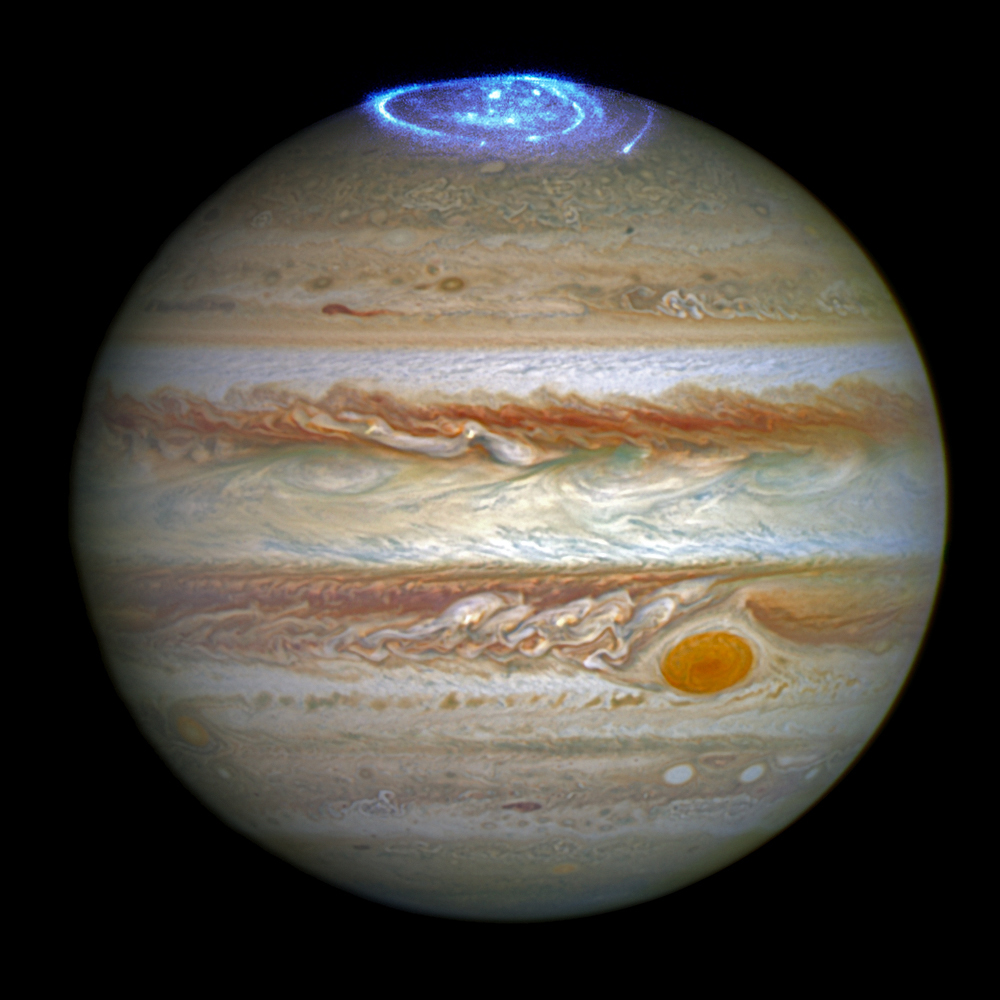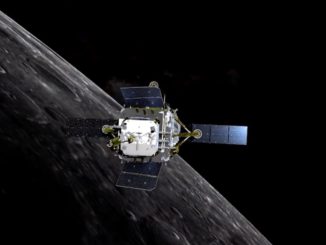Peering a half-billion miles across the solar system, the Hubble Space Telescope has caught a glimpse of brilliant auroras flashing over Jupiter’s north pole as NASA’s Juno orbiter speeds toward the gas giant for a close-up look.
Part of Juno’s multi-pronged scientific campaign is aimed to determining how Jupiter’s auroras form and evolve, along with investigations into the enormous world’s atmosphere and deep interior.
The $1.1 billion mission carries instruments to observe the northern and southern lights in visible, infrared and ultraviolet wavelengths, plus plasma and magnetic field sensors to detect waves of charged particles funneling into Jupiter’s poles, where they collide with atoms of gas and create a glow.
Juno arrives at Jupiter on Monday, when its main engine is due to fire for 35 minutes to steer into orbit around the planet.
The promise of Juno is the simultaneous observation of the constant, but ever-changing, auroras with the flow of high-energy ions and electrons that trigger the polar light shows, according to Fran Bagenal, a co-investigator on the Juno mission from the University of Colorado at Boulder.
“We have this unique situation of uno flying over the poles, we look down on the aurora in the ultraviolet, the infrared, and in the visible with JunoCam, and then we will be able to also fly through the region where the charged particles are coming in and bombarding the atmosphere,” Bagenal said. “So we’ll be able to measure the acceleration processes that cause these auroral effects.”
Hubble is watching Jupiter almost daily for several months to track changes in the planet’s auroras. Scientists will compare the observations with Juno’s measurements.
Ultraviolet images of Jupiter’s northern auroras taken by Hubble’s Space Telescope Imaging Spectrograph in May and early June were released Thursday.

“These auroras are very dramatic and among the most active I have ever seen,” said Jonathan Nichols from the University of Leicester, UK, and principal investigator of the study. “It almost seems as if Jupiter is throwing a fireworks party for the imminent arrival of Juno.”
Unlike Earth’s auroras, Jupiter’s auroras never stop. They stretch across a swath of Jupiter nearly three times larger than Earth, according to Bagenal.
Scientists want to know what controls the flicker-like motion of Jupiter’s auroras.
“Is it an internal effect or is it external?” Bagenal said Thursday, adding that physicists will compare Jupiter’s auroras with those of Earth and Saturn to tease out the inner workings of such phenomena.
In another key contrast with Earth, the auroras on Jupiter are not only spawned by the incoming solar wind, a stream of charged particles flowing away from the sun at a million miles per hour.
Particles cast off by Jupiter’s four largest moons, most notably the innermost volcanic satellite Io, are also sucked into the planet’s polar regions by its powerful magnetic field. Material spewed into space from Io’s numerous volcanoes gets pulled into Jupiter’s magnetic field and into the planet’s atmosphere with an electrical current of more than a million amps.
The video posted above shows the footprint of Io near Jupiter’s north pole at the lower left of the image.
“Where the charged particles that are carrying those currents hit the atmosphere, they make it glow, so you get these spots associated with these moons — Io, Europa and Ganymede,” Bagenal said.
Email the author.
Follow Stephen Clark on Twitter: @StephenClark1.



